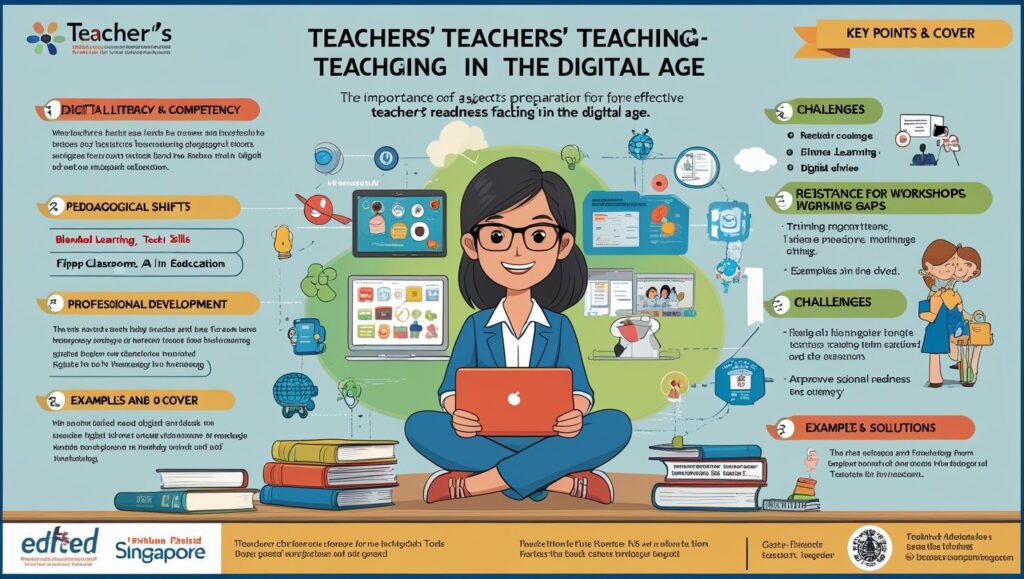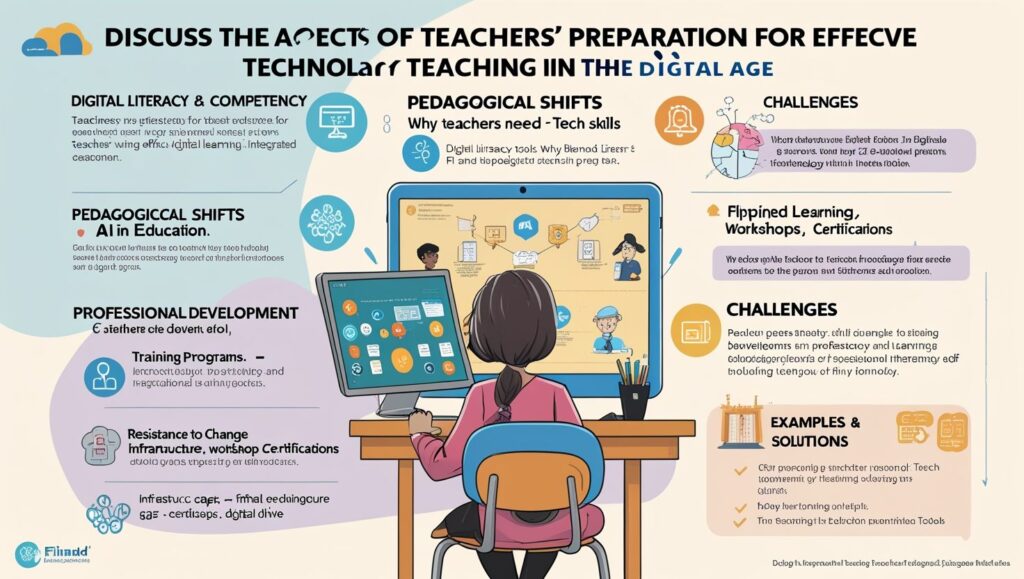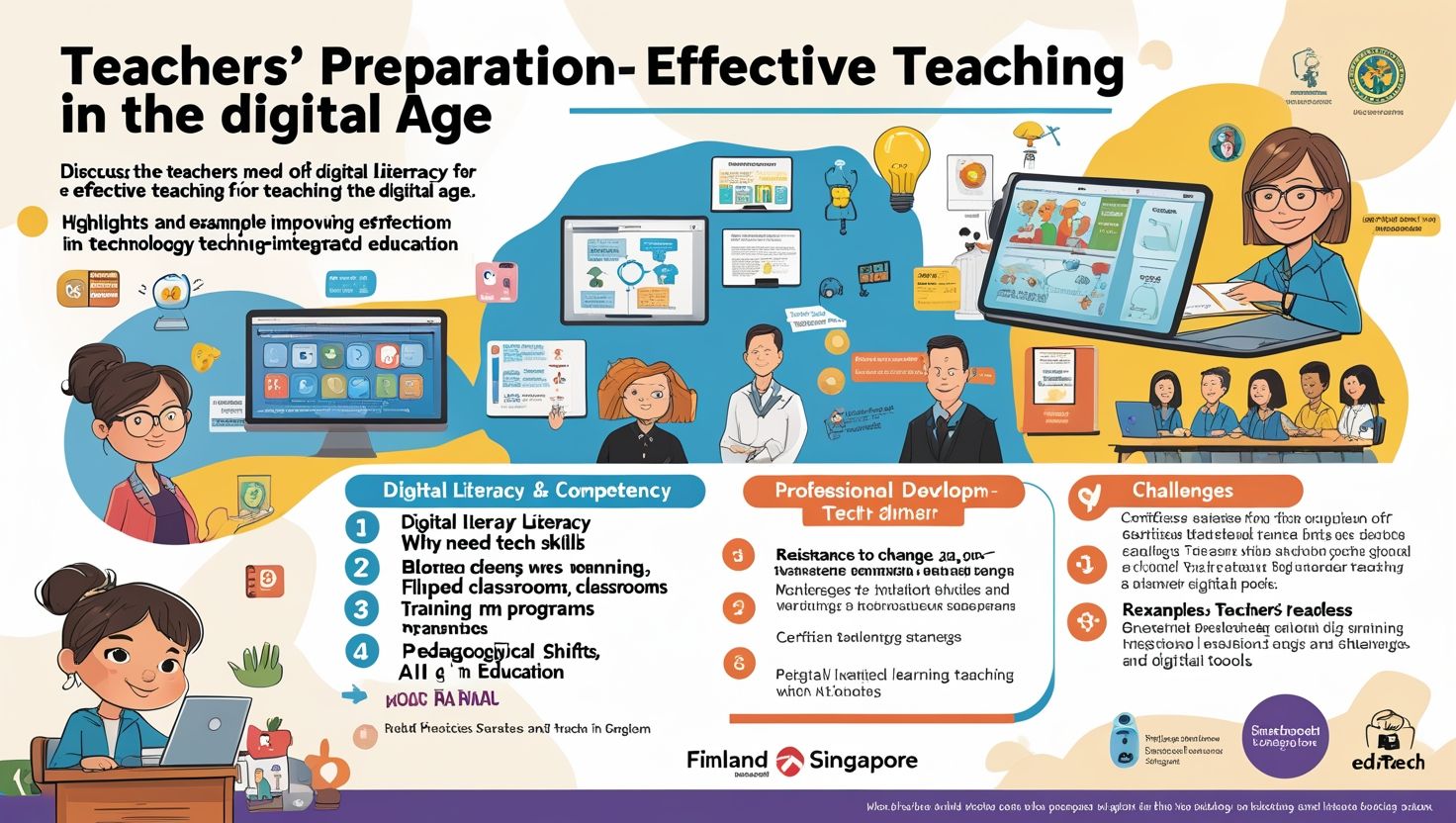Topic
Teachers’ Preparation for Teaching in the Digital Age, The rapid advancement of digital technologies has transformed education, making it essential for teachers to adapt to new teaching methodologies. This article explores the necessary preparations teachers must undergo to effectively teach in the digital age, including digital literacy, pedagogical shifts, professional development, and challenges faced in integrating technology into classrooms.
Background
The 21st century has witnessed a significant shift from traditional teaching methods to technology-driven education. With the rise of digital tools such as Learning Management Systems (LMS), artificial intelligence (AI), virtual reality (VR), and online collaboration platforms, teachers must acquire new skills to remain effective. The COVID-19 pandemic further accelerated the need for digital readiness, as remote learning became a necessity. However, many educators still lack adequate training in digital pedagogy, leading to disparities in education quality.
Main Ideas
1. Digital Literacy and Competency
Teachers must develop digital literacy to navigate and utilize technology effectively. This includes:
- Understanding digital tools (Google Classroom, Zoom, Microsoft Teams).
- Using educational software (Kahoot!, Nearpod, Quizlet).
- Ensuring cybersecurity and digital ethics awareness.
2. Pedagogical Shifts in the Digital Age
Traditional lecture-based teaching is no longer sufficient. Modern pedagogy includes:
- Blended Learning: Combining online and face-to-face instruction.
- Flipped Classrooms: Students learn content online and engage in discussions in class.
- Personalized Learning: Using AI to tailor lessons to individual student needs.

3. Professional Development and Continuous Learning
Schools and institutions must provide ongoing training, such as:
- Workshops on emerging EdTech tools.
- Certification courses in digital teaching strategies.
- Peer collaboration and online teacher communities (e.g., Edmodo, Teachers Pay Teachers).
4. Challenges in Digital Teaching Preparation
Despite advancements, several barriers exist:
- Resistance to Change: Some educators prefer traditional methods.
- Lack of Infrastructure: Poor internet access and outdated devices in schools.
- Unequal Access: The digital divide affects low-income students and rural areas.

Examples of Successful Digital Teaching Integration
- Finland’s Teacher Training: Finnish educators undergo rigorous digital pedagogy training, making them leaders in tech-integrated education.
- Singapore’s “ICT Masterplans”: The government invests in teacher upskilling and digital infrastructure.
- Khan Academy & Coursera: These platforms provide free resources for teachers to enhance digital teaching skills.
References
- UNESCO. (2021). Digital Transformation in Education.
- European Commission. (2020). Digital Education Action Plan.
- Mishra, P., & Koehler, M. J. (2006). Technological Pedagogical Content Knowledge (TPACK) Framework.
Conclusion
Preparing teachers for the digital age is crucial for fostering an effective and inclusive education system. By enhancing digital literacy, adopting modern pedagogies, and addressing infrastructural challenges, educators can better engage students in a technology-driven world. Governments and institutions must prioritize teacher training to bridge the gap between traditional and digital education.
Key Aspects and Questions for Further Discussion
- How can schools ensure equitable access to digital tools for all teachers and students?
- What role should governments play in funding digital teacher training programs?
- How can teacher preparation programs integrate digital competencies into their curricula?
- What are the long-term impacts of digital teaching on student learning outcomes?
- How can educators balance technology use with maintaining human interaction in classrooms?
This article highlights the necessity of teacher readiness in the digital era, offering insights into best practices and areas needing improvement. By addressing these challenges, the education sector can better prepare for a future where technology and teaching go hand in hand.

5 thoughts on “Teachers’ Preparation for Teaching in the Digital Age”